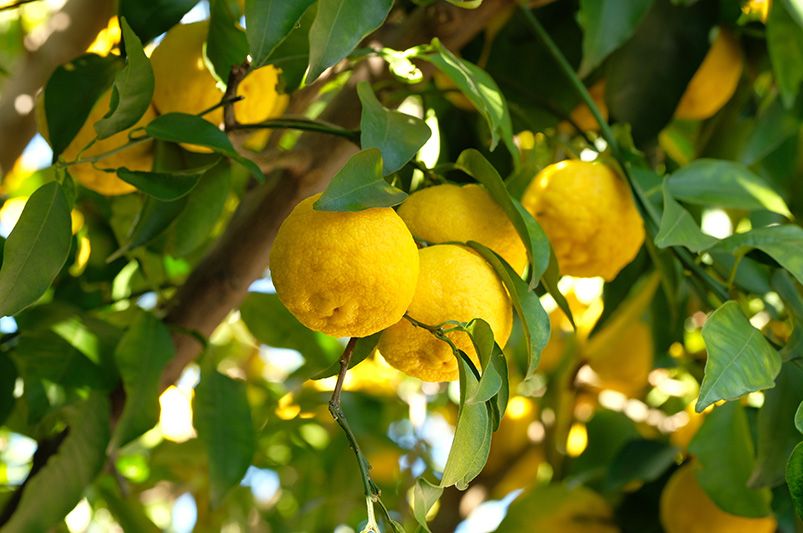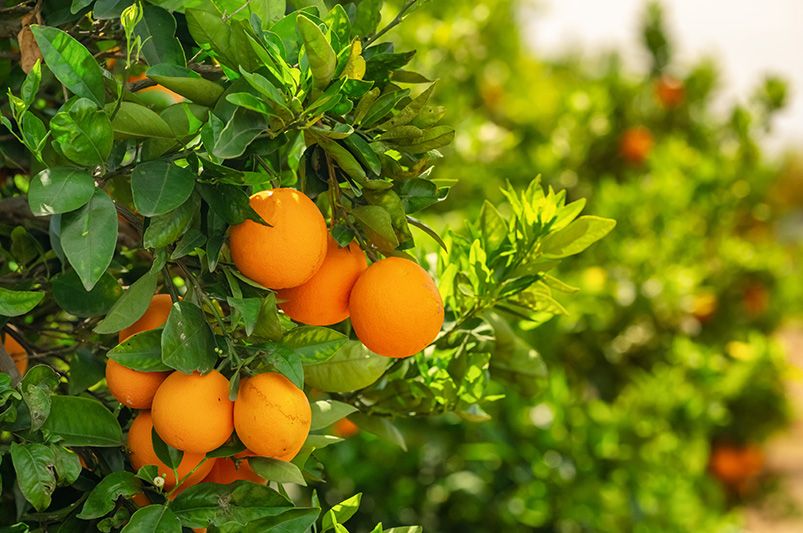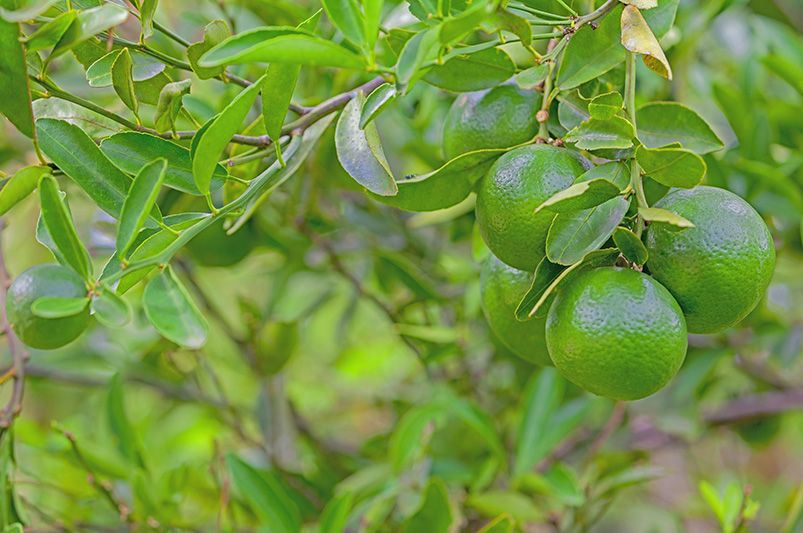
Citrus Trees: Beginner's Guide for Success
Published: 12/09/2024 | Updated: 12/09/2024
Key Highlights
- Citrus trees thrive in warm, sunny climates with well-drained soil.
- Popular citrus varieties include oranges, lemons, limes, and grapefruits.
- Plant citrus trees in early spring after the last frost for optimal growth.
- Regular watering and fertilizing are crucial, particularly during the growing season.
- Protect citrus trees from frost and pests to ensure healthy fruit production.
- Harvest citrus fruits when they reach maturity, based on their color and firmness.
Introduction
Imagine going into your backyard and picking fresh, tasty citrus fruit from your trees! Growing citrus trees can be fun and exciting. With some care and attention, even beginners can have great success. This complete guide will give you everything you need to grow different citrus varieties. It covers choosing the best spot and tips for harvesting your yummy citrus fruit.


Understanding Citrus Trees
Citrus trees are popular in gardens because they have shiny leaves, pleasant flowers, and tasty fruits. These trees are evergreen and come from warm tropical and subtropical areas. They grow well in sunny and warm climates. There are many types of citrus trees, like the tangy lemon tree and the sweet orange tree. Even with their differences, they have some similar traits.
To keep citrus trees healthy, it's important to know their basic needs. They need well-drained soil and regular watering, especially during their growing season. They also require the right fertilizers to produce healthy fruit. By knowing what they prefer, you can create the best conditions for your citrus trees. This will help them grow well and give you lots of delicious fruit.
The Different Types of Citrus Trees
The world of citrus has many flavors and smells, each one special. Lemon trees have a classic tart taste, while orange trees offer sweet, juicy pieces. There is a citrus type for everyone. When picking citrus trees for your garden, think about what you like and how much space you have.
Lemon trees are a great choice if you want vitamin C. They are useful for cooking and home uses. The Meyer lemon tree is popular with gardeners because it has fruit that is sweeter and less sour. This makes it great for baking and juicing. If you like sweeter oranges, you might want to choose mandarin oranges. They are easy to peel and some are seedless. By doing a little research, you can find the right citrus trees to make a lovely and fruitful garden in your backyard.
Basic Requirements for Growing Citrus Trees
Citrus trees need the right conditions to grow well and give you a good harvest. When picking a spot for your citrus tree, think about its need for sunlight. Choose a location that gets at least six hours of full sun every day. Not enough light can hurt fruit production.
Next, make sure your soil drains well. Citrus trees do not like "wet feet," which can cause root rot and other issues. Adding organic matter like compost can help the soil drain better and improve its health.
Consistent watering is very important, especially during the growing season. Citrus trees need enough moisture to grow properly. Be sure to let the soil dry out a bit between waterings to avoid overwatering.
Preparing to Plant Your Citrus Tree
Before you plant your citrus tree, you need to gather the right supplies. You should also choose the best spot for it. Look at things like how much space you have, how much sunlight it gets, and how well the soil drains. These factors will help create a good home for your citrus tree to grow. This setup is important for your tree’s success. It will start off strong and grow healthy, leading to a good harvest later on.
What You Will Need to Get Started
First, you need to get a healthy citrus tree from a good nursery. Look for a tree with bright leaves, no pests or diseases, and a strong root system. After you choose your citrus tree, it is time to collect the rest of the materials. You will need a good shovel to dig the planting hole. Having some compost is also smart to improve the soil.
You’ll also need a watering can or hose for the first watering. A bag of mulch will help keep moisture and prevent weeds. Finally, it is smart to have gardening gloves to protect your hands while planting. With these supplies, you will be ready to give your new citrus tree a great start in its new home.
Choosing the Right Location and Soil
Selecting the right spot is very important when planting a citrus tree. These trees love the sun and need at least six hours of direct sunlight each day. Find a place in your yard that gets plenty of sunshine. It's also important to choose an area with good drainage. Citrus trees can have trouble with their roots if the soil has too much water.
You can check the drainage by digging a hole that is 12 inches deep. Fill it with water and see how fast it drains. If it drains slowly, you might need to improve the drainage. You can do this by adding organic matter to the soil or picking another place to plant. Also, make sure the site is big enough for your citrus tree when it grows. With careful planning and the right spot, your citrus tree can grow well and produce fruit.

Step-by-Step Guide to Planting Citrus Trees
Now that you have picked the perfect spot and collected your supplies, it's time to plant your citrus tree! If you follow these easy steps, you will help your new tree settle in properly and get a good start in its new home. The right planting technique is very important for the health and growth of your citrus tree. Let's begin!
Step 1: Preparing the Planting Site
The first step is to get the planting hole ready. It's best to do this in early spring after the last frost. Use a shovel to dig a hole that is twice as wide as the root ball of your citrus tree and the same depth. This helps the roots spread out and settle into the soil quickly.
When deciding how deep to plant, think about the rootstock of your tree. The graft union, where the part that gives fruit is attached to the rootstock, should be slightly above the soil surface. This helps prevent rot. Fill the hole back up with a mix of the original soil and compost. Make sure this mix is loose and drains well.
Step 2: Planting Your Citrus Tree Correctly
- Carefully take the citrus tree out of its container. Be cautious not to harm the roots.
- If you see the roots are wrapped around the bottom of the pot, gently loosen them with your fingers before planting.
- Put the tree in the middle of the planting hole. Make sure the top of the root ball is even with the soil around it.
- Remember, planting the tree too deep can cause problems in the future.
- Once the tree is in place, fill the hole back with soil and compost mix.
- Gently press the soil around the roots as you do this.
- Try not to pack the soil too tightly. This can stop water from draining properly.
Step 3: Initial Watering and Mulching
After you plant your citrus tree, make sure to water it well. Water it slowly so the water reaches deeply into the root zone. Be careful not to give too much water, as this can harm the roots.
Putting a layer of mulch around the base of the tree is also very important. Leave a few inches around the trunk free of mulch. Mulch keeps the soil moist, helps stop weeds, and keeps the soil temperature steady.
Using organic mulches like wood chips or bark is best since they break down over time. Remember to add more mulch later on to keep getting the benefits. By watering and mulching correctly, your citrus tree will settle in its new spot quickly.

Caring for Your Citrus Trees
Once you have successfully planted your citrus tree, it is essential to provide proper care to ensure its longevity and health. Regular watering is crucial to keep the tree hydrated and thriving. Additionally, using the appropriate fertilizer at the correct times will help nourish the tree and promote healthy growth. Pruning is another important task that should be done periodically to encourage optimal development.
In addition to these fundamental care practices, it is worth noting that citrus trees thrive in well-draining soil with adequate sunlight exposure. Monitoring for pests and diseases is also vital to address any issues promptly and prevent them from affecting the tree's health.
By following these care tips diligently, you can support your citrus tree in staying healthy, robust, and productive, yielding delicious fruits for years to come.
Watering Your Citrus Trees
Proper watering is very important for your citrus trees. They like deep watering so that the water gets into the root zone well. It's better to water deeply than to water often but shallower. How often you water will depend on things like the age of the tree, the weather, and the type of soil.
Generally, water your citrus tree when the top one or two inches of soil feel dry. You can do this by sticking your finger in the soil or using a moisture meter. Make sure not to overwater because this can cause root rot and other issues. It is important to keep a steady watering routine, especially when it's dry. If the leaves on your citrus tree start to wilt, it might mean you need to water it more.
Fertilizing to Promote Healthy Growth
Fertilizing is important for keeping nutrients in the soil. It helps citrus trees grow well and have a good harvest. Citrus trees need certain nutrients, so use a good citrus fertilizer made just for them. Look for one that has important macronutrients like nitrogen, phosphorus, and potassium. Micronutrients such as iron and zinc are also important.
If your trees lack nutrients, they may not grow tall. Their leaves can turn yellow, and they may produce less fruit. To stop these problems, fertilize your citrus trees regularly during their growing season, which is usually from spring to fall. Do not fertilize in winter when the trees grow slowly. Always follow the instructions on your citrus fertilizer for the right amounts and timing.
Pruning for Shape and Health
Pruning is very important to keep your citrus trees healthy and productive. It helps shape the tree and allows for better air circulation. Regular pruning removes any dead, damaged, or sick branches. It also encourages new growth. The best time to prune citrus trees is late winter or early spring, just before the growing season starts.
Start by getting rid of any suckers. Suckers are fast-growing shoots that come from the base of the tree. They take energy from the main trunk and need to be completely removed. Next, cut out any branches that are crossing, rubbing, or growing inwards. This will help open up the tree's canopy and improve airflow. You can also remove water sprouts. These are tall, straight shoots that grow from the main branches.
Protecting Citrus Trees from Pests and Diseases
Citrus trees are generally low-maintenance, but they are susceptible to pests and diseases that can impact their overall health and fruit yield. Common pests that citrus trees may encounter include aphids, mites, and citrus leaf miners, while diseases such as citrus canker and greening can also pose significant threats. Regular monitoring of your citrus trees is essential to identify any issues promptly.
To maintain the health of your citrus trees, it is crucial to take preventive measures such as proper watering, fertilization, and pruning practices. Applying organic mulch around the base of the tree can help retain moisture and regulate soil temperature. Additionally, using natural predators or organic pesticides can aid in controlling pest populations without harming beneficial insects.
If you notice any signs of pest infestation or disease infection on your citrus trees, it is important to act swiftly. Pruning affected branches, removing diseased leaves, and applying appropriate treatments recommended by agricultural experts can help mitigate the spread of pests and diseases. By staying vigilant and addressing problems promptly, you can protect your citrus trees from potential threats and ensure their longevity and productivity.
Common Pests and How to Manage Them
Citrus trees can have problems with different pests. These pests can hurt their growth and reduce fruit production. Common pests are aphids, scale insects, and citrus leaf miners. To control these pests, you can use natural predators like ladybugs. You can also add helpful nematodes to the soil. Check your citrus trees often for signs of pests and act quickly if you find any. Keeping your area clean by removing fallen leaves and debris can also help stop pest problems.
Preventing and Treating Common Diseases
Citrus trees can get sick from different diseases. These include fungal and bacterial infections. To keep your trees healthy, you must make sure their environment does not allow diseases to grow. You can do this by watering them properly, ensuring there is good air flow, avoiding watering from above, and quickly removing any sick parts.
Some common diseases that affect citrus trees are citrus greening, citrus canker, and root rot. Citrus greening is a serious bacterial disease. It can lead to slow growth, yellow leaves, and oddly shaped fruit. To stop diseases from spreading, it's important to keep good cleaning habits. This means cleaning pruning tools and getting rid of sick plant material.

Harvesting and Enjoying Your Citrus Fruits
The wait is over! After many months of care, it's time to pick your citrus fruits. Harvesting them when they are perfectly ripe gives you the best taste and sweetness. The right time to pick depends on the type of citrus fruit you are growing. Still, there are some general tips that can help you know when your citrus harvest is ready.
When and How to Harvest Citrus Fruits
Citrus fruit does not ripen after being picked, so it's important to know when to harvest them. Usually, citrus fruits change color as they ripen. They go from green to their usual orange, yellow, or lime colors. Still, color can be tricky as a sign of ripeness. Some types change color before they fully mature.
You can check if the fruit is ripe by gently squeezing it. It should feel firm but a bit springy. Use pruning shears or a sharp knife to pick the fruit, and leave a short stem to avoid rot. After harvesting the citrus fruits, you can enjoy them fresh or use them in many recipes!
Storing and Using Your Citrus Harvest
To keep your citrus harvest fresh and tasty, storing them properly is important. Citrus fruits should be kept at cool temperatures, best between 40-50°F. You can place them in the refrigerator's crisper drawer for several weeks.
If you have a lot of citrus fruits, try storing them in a cool, dry spot. You can use your fresh citrus fruits in many ways. You can juice them to make delicious drinks or use the zest and juice in your baking. There are so many options! Freshly squeezed citrus juice gives a great flavor to cocktails, marinades, and salad dressings.
Conclusion
In conclusion, growing citrus trees is a fun and rewarding hobby for anyone who enjoys gardening. If you learn about the different kinds of citrus trees and what they need, you can have a lot of tasty fruits. Be sure to pick a good spot for planting, water them well, and take care to feed them right. Also, watch out for pests and diseases to keep your trees safe. When it's time to harvest your citrus fruits, do so at the right moment and store them properly. This way, you can fully enjoy what you’ve grown. Feel free to share this guide with other citrus tree lovers on social media. Happy planting!
Frequently Asked Questions
Can citrus trees grow in pots?
Yes, citrus trees can grow well in pots. This is great for places with cold weather since you can move them inside when it gets chilly. Make sure to pick a pot that has good drainage holes. This helps to stop too much water from building up and helps the roots grow properly.
How often should I water my citrus tree?
The amount of water you give your citrus tree depends on things like temperature, humidity, and the size of the tree. Usually, you should water your citrus tree deeply when the top one to two inches of soil feel dry. Be careful not to overwater it because that can make the soil too wet and cause root issues.
Do citrus trees need full sun?
Citrus trees grow best in full sun. They need at least six hours of direct sunlight every day to produce good fruit. If they do not get enough sunlight, the amount of fruit can go down and the leaves may not look as bright.
Can I grow a citrus tree from a seed?
Growing a citrus tree from a seed is doable. However, it may take several years before it starts to produce fruit. Also, the tree might not show the same traits as the original variety.
How long before a citrus tree bears fruit?
The time for a citrus tree to grow fruit depends on the type and the conditions it is in. Usually, it takes about 3 to 5 years for a citrus tree to grow up and give a good amount of fruit.
At ShrubHub, we specialize in creating custom outdoor spaces that fit your lifestyle and preferences. If you’re considering adding a putting green to your backyard, our expert team is here to help you every step of the way, from design to installation. We offer a wide range of services, including 3D landscape designs that bring your vision to life and a variety of high-quality materials to ensure your putting green is built to last.
Explore our website at ShrubHub to learn more about how we can help you create the backyard of your dreams. Whether you're looking for professional advice, design inspiration, or a trusted team to bring your ideas to life, we're here to make it happen. Contact us today to get started on your backyard transformation!


